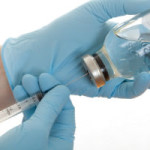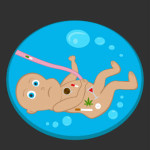Sleep Apnea Alternative to the CPAP Machine
Obstructive sleep apnea, a disorder characterized by a constriction or blockage of the airway, can cause sleep interruptions on a regular basis. Airway tissues folding into the airway or the tongue slipping back over the airway are common occurrences during a sleep apnea episode. As a result, the person’s natural breathing stops and their blood oxygen levels decrease, forcing them to gasp for air, snore loudly, and wake up numerous times every night.
Health Issues Resulting from Untreated Sleep Apnea
Undiagnosed sleep apnea causes a number of health issues, including daily exhaustion and forgetfulness, as well as weight gain, leg edema, and persistent xerostomia (dry mouth syndrome). People with sleep apnea are often unaware that they have the disorder until someone else notices their sleeping patterns. Dentists and doctors can diagnose sleep apnea by looking for anomalies in the patient’s mouth, jaw, and airway that could cause breathing problems while they sleep.
What is a CPAP?
Although a CPAP (continuous positive airway pressure device) machine is commonly prescribed for persons with OSA, some people find it uncomfortable to wear at night, irritating to their sinuses, and claustrophobic. Because a CPAP machine comprises of an air machine and a mask that fits over a person’s nose to pump air into their airway while they sleep, it can be very uncomfortable. However, many OSA sufferers find the machine’s loudness and the sensation of air flowing into their nose to be unpleasant and ultimately unsuccessful.
Alternatives to CPAP
A lower jaw that is shorter than the upper jaw (retrognathia), palate anomalies, a higher than usual neck circumference (more than 16 inches), and obesity are all common causes of sleep apnea. Dentists that specialize in alternative sleep apnea devices will evaluate tonsil and adenoid size when examining individuals suspected of having sleep apnea to see if they are contributing to airflow obstruction. If necessary, dentists can fit sleep apnea sufferers with acrylic dental devices called “mandibular advancement devices” to rectify poor lower jaw alignment or tongue retention appliances to keep a wide tongue from sliding out.
BiPAP
A BiPAP (bilevel positive airway pressure) machine, as opposed to a CPAP machine, has two pressure settings to aid those who have trouble exhaling while the equipment pumps air into their nose.
Positional Therapy for Mild Sleep Apnea
Positional treatment, which involves utilizing goods such as specially tailored shirts to prevent a person from sleeping on their back and therefore encouraging a sleep apnea episode, is typically useful for persons suffering from mild OSA.






